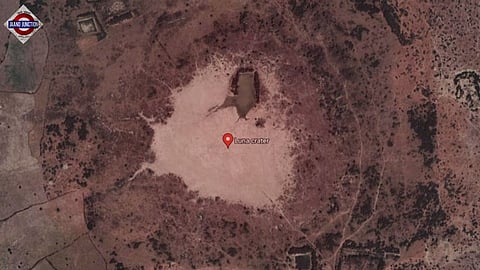

Scientists have confirmed that the massive 1.8 km wide crater in Gujarat's Kutch region is the result of one of the biggest asteroid crashes from space on Earth.
Analysis of rocks and dirt around the Luna shows that whatever hit it was probably made of iron or a mix of iron and rock. Researchers also found some layers of old plant remains underneath the debris from the impact.
Using a method called radiocarbon dating, scientists found out that these plants lived about 6,905 years ago.
"Luna area is strewn with melt-like rocks having high specific gravity and displaying a wide range of magnetic properties. It contains minerals like wustite, kirschsteinite, ulvospinel, hercynite, and fayalite," the paper read.
The Lunar structure is located in the low-lying Banni Plains of the tectonically active Kutch Basin and remains submerged and inaccessible for a greater part of the year owing to its presence in the low-lying basin.
Scientists also checked the rocks and found some elements in them that are often found in space rocks. These elements include Rhodium, Palladium, Osmium, Iridium, and Platinum. However, the ground covering Luna is thick, so scientists can't see what exactly got hit there.
It is known that impact cratering has played an important role throughout solar system history, "such as the formation of Moon, the evolution of primitive crust, ocean vaporisation events, emplacement of large igneous provinces, genesis of economic mineral and hydrocarbon resources," among others.
